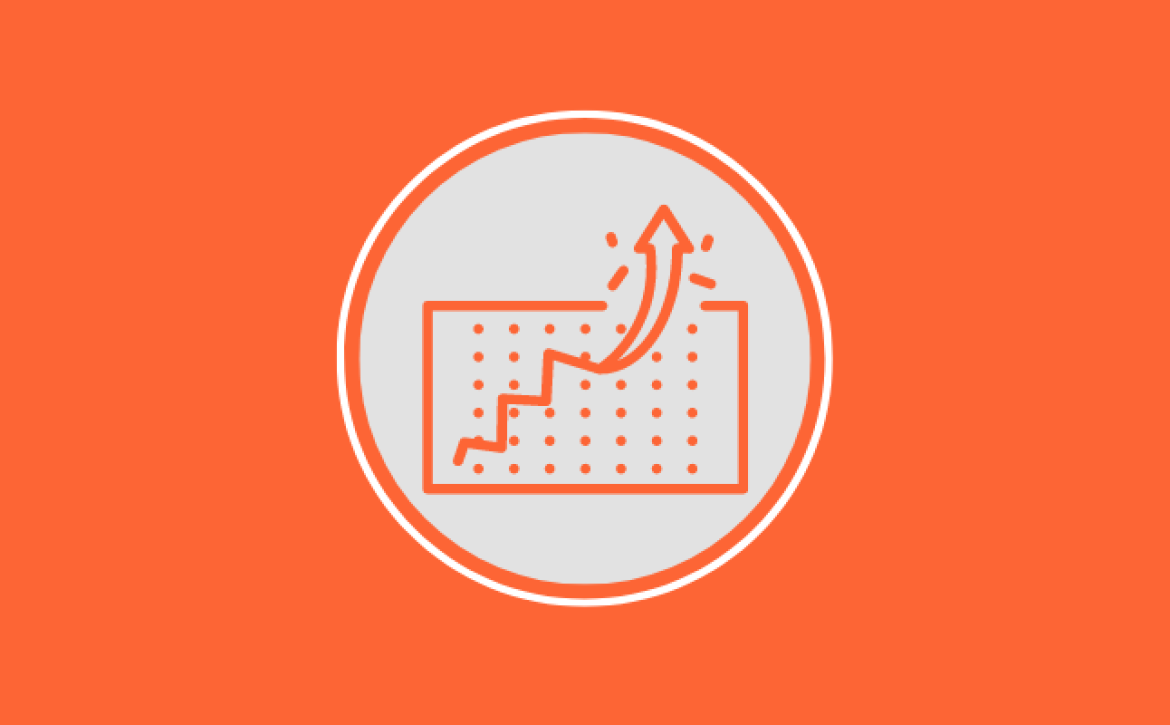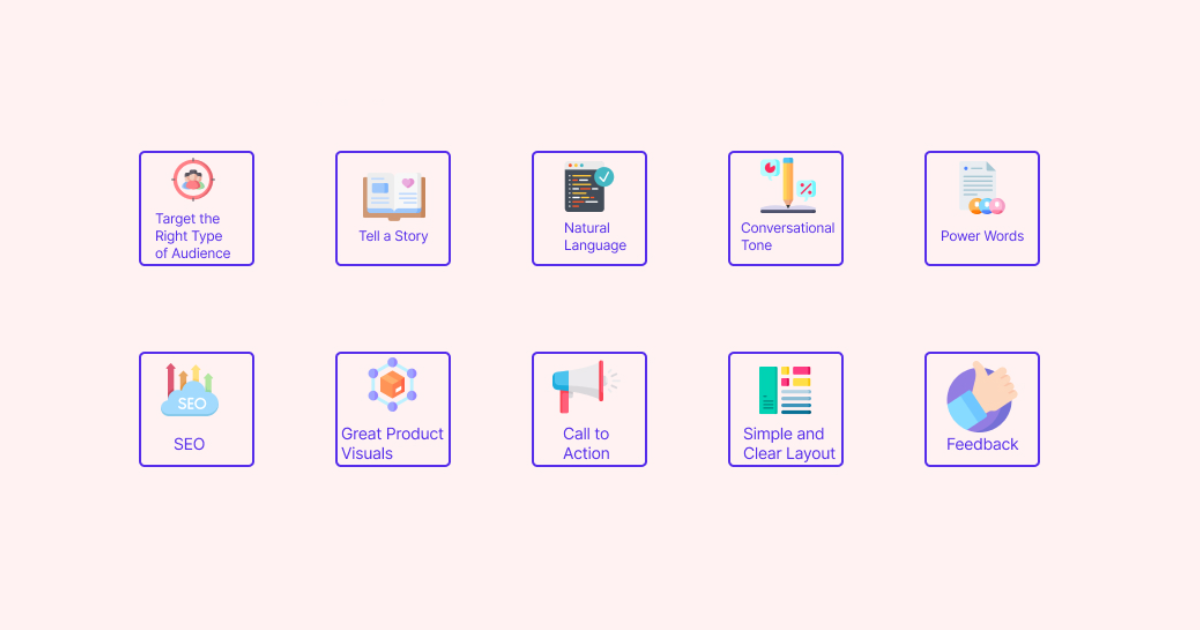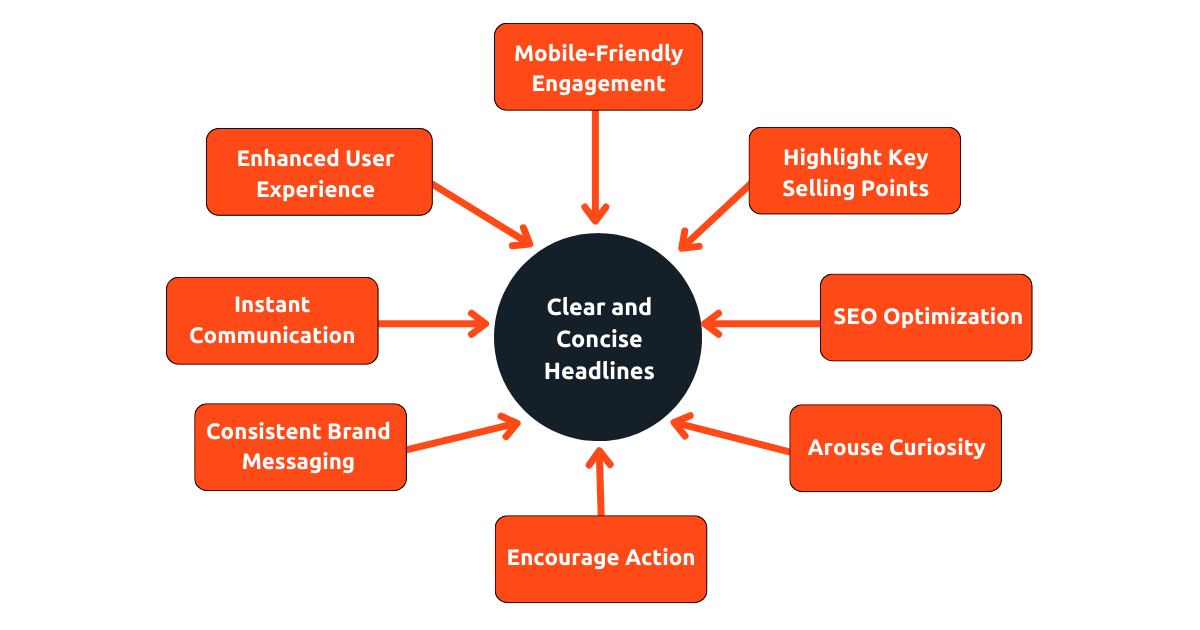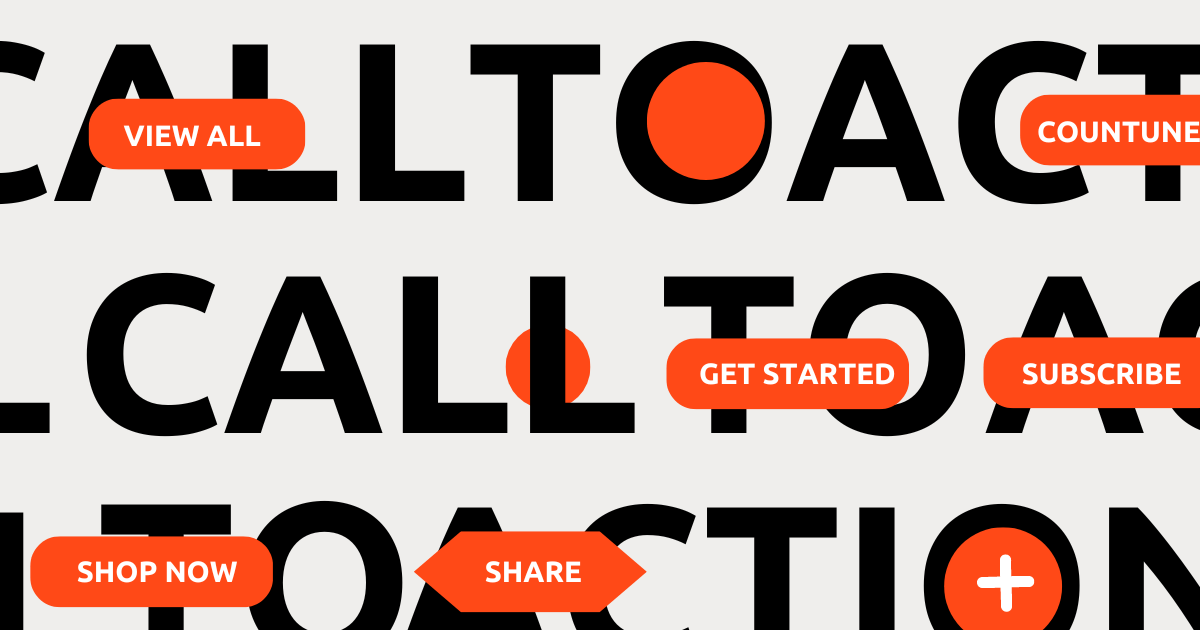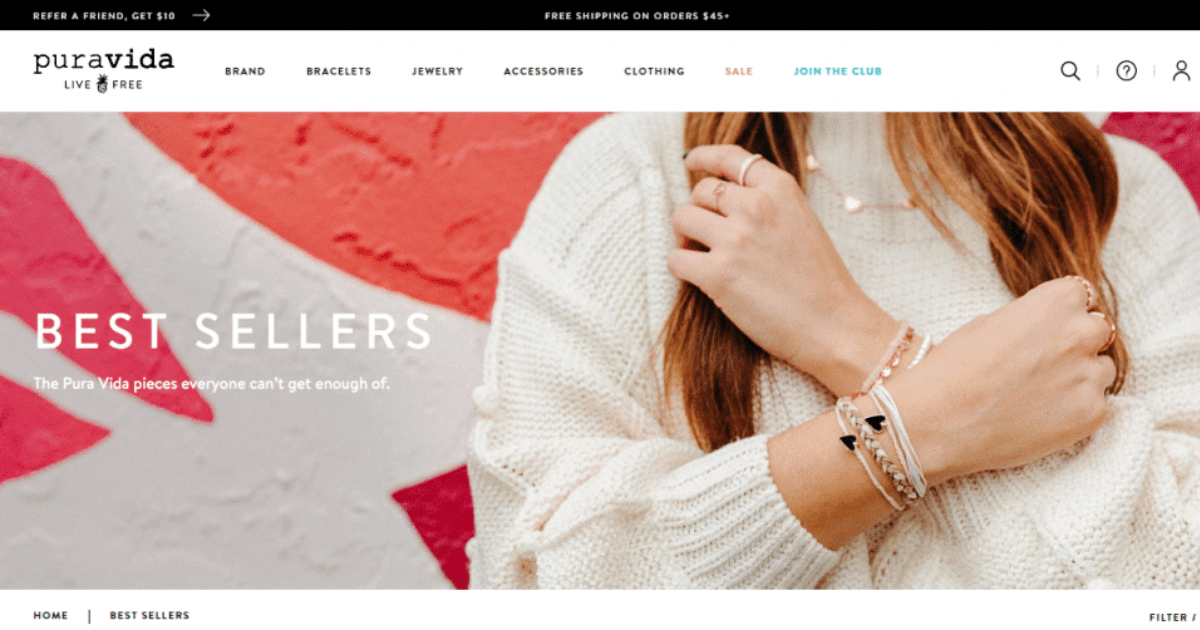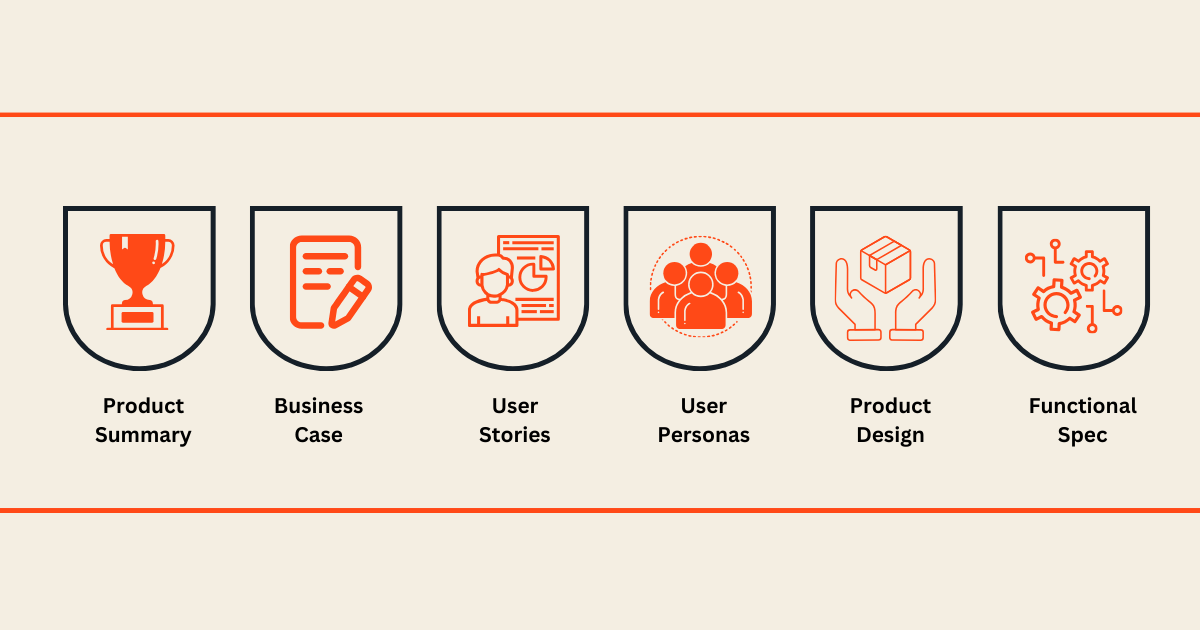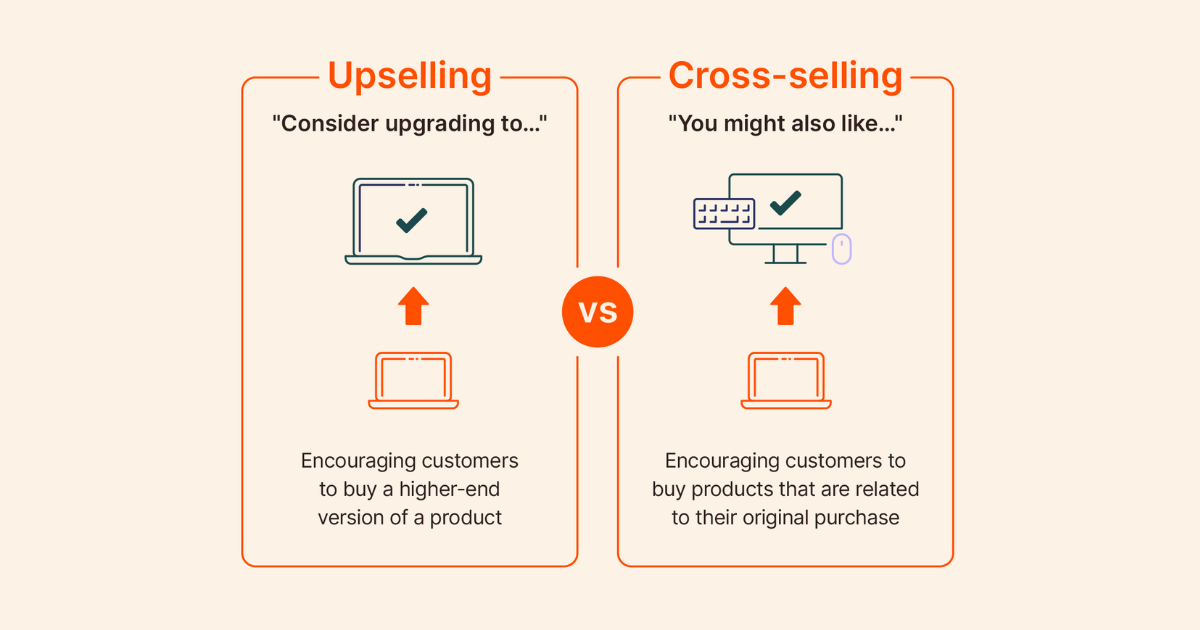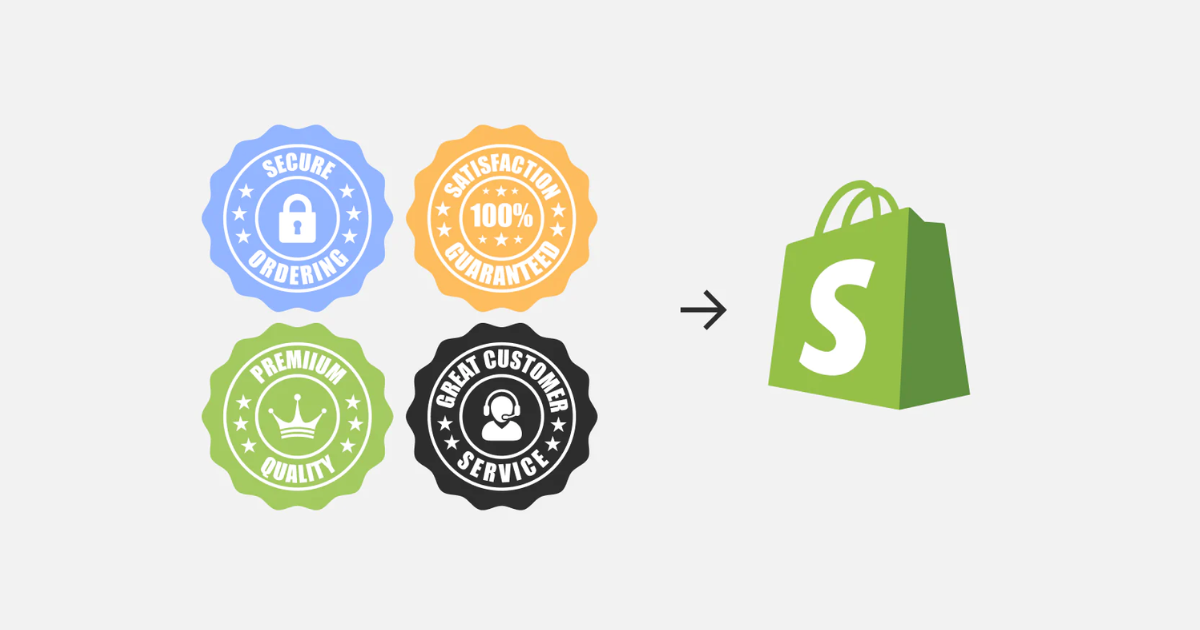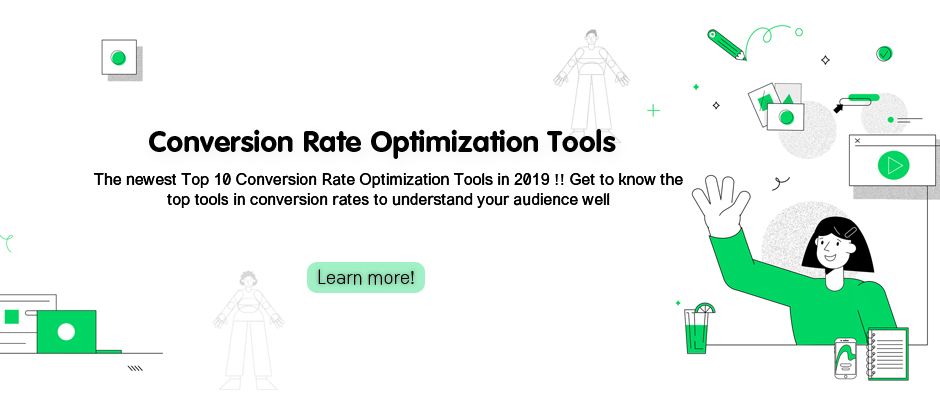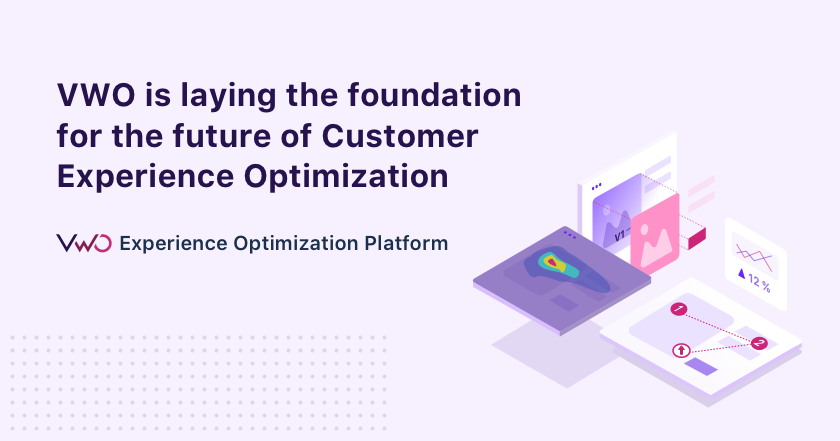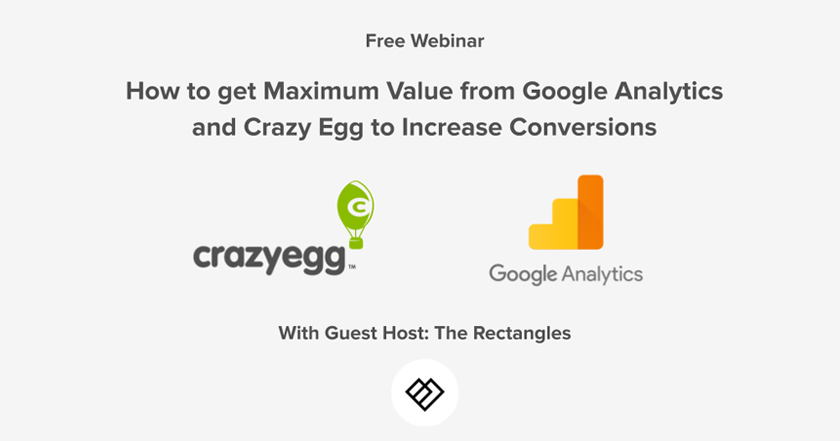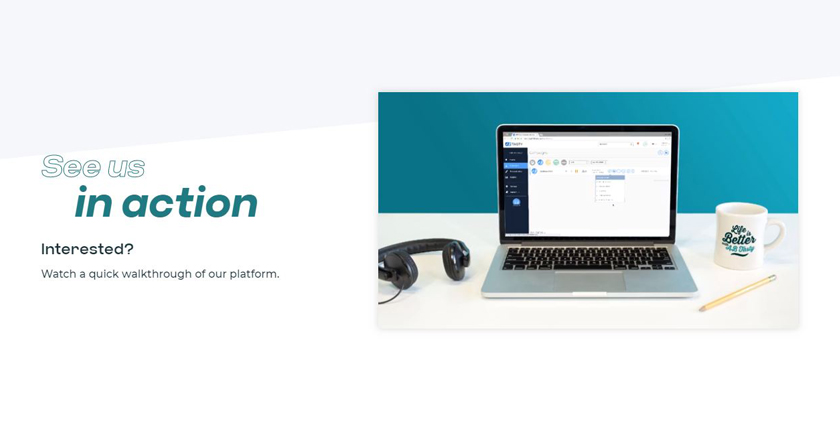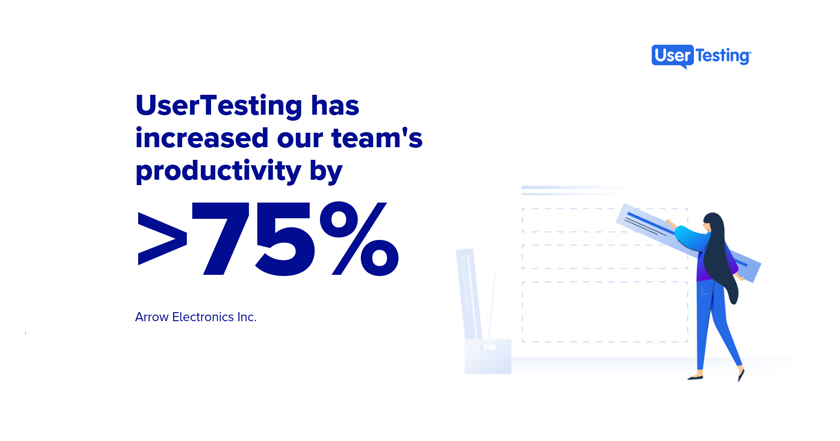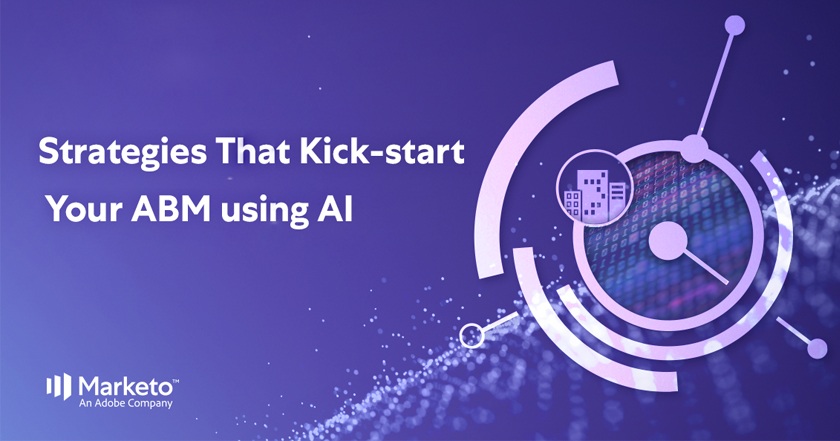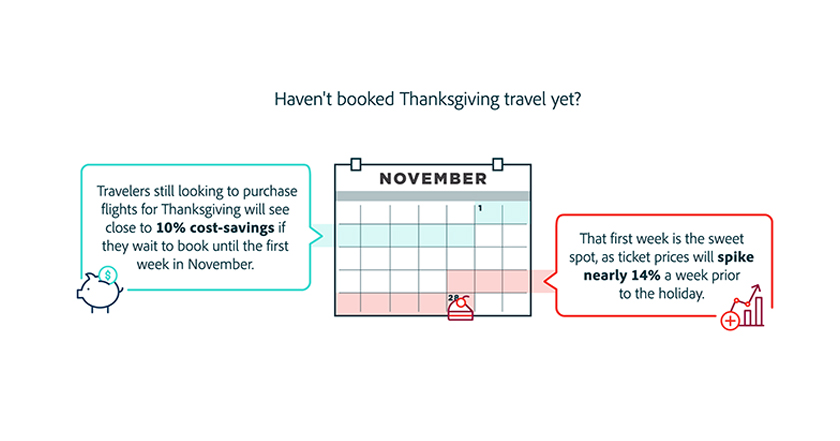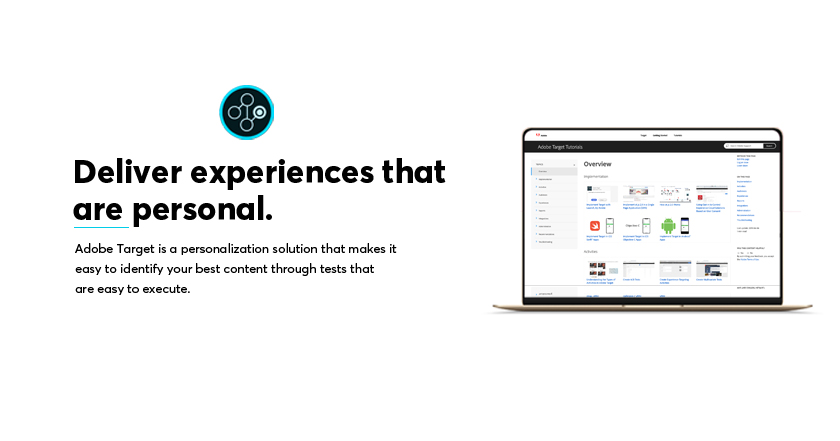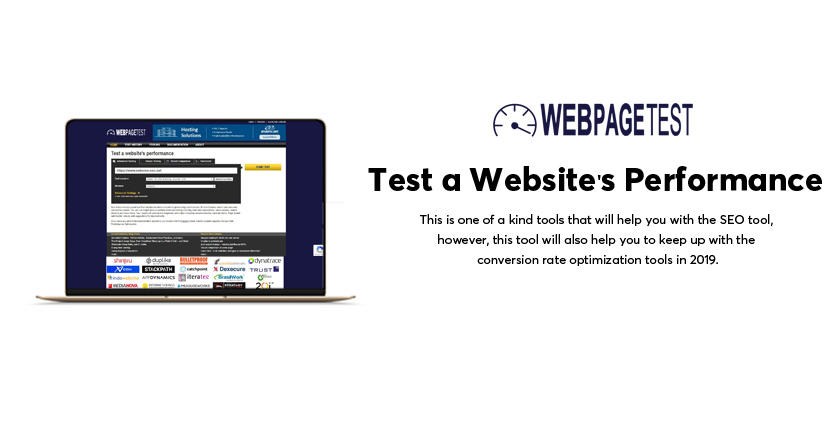12 Proven Best Practices to Skyrocket Your Product Page Conversions
Are you struggling to turn your website visitors into loyal customers? The key might lie in optimizing your product pages. Whether you’re in the eCommerce business or simply showcasing your products online, creating an irresistible product page is essential for driving conversions and increasing sales. In this article, we’ll delve into 12 proven best practices that can elevate your product pages, captivate your audience, and ultimately lead to a surge in conversions.
Ready to boost your sales and transform your business? Let’s dive in!
12 Best Practices for Enhancing Your Product Page Conversions
1. Compelling Product Descriptions
In the fiercely competitive world of online market, the success of your product page hinges on more than just high-quality images and a user-friendly interface. Writing compelling product descriptions is a powerful strategy that can significantly boost your conversion rates. Here’s why investing time and effort into creating persuasive product descriptions is a best practice that can set your business apart:
- Tell a Story: Engage your customers by narrating a story around your product. Help them envision how the product fits into their lives, addressing their needs or solving their problems. A compelling narrative can establish an emotional connection, making your product more memorable.
- Highlight Benefits, Not Just Features: While listing product features is essential, it’s equally important to emphasize the benefits. Clearly communicate how your product can enhance the customer’s experience, simplify their routine, or fulfill a specific desire. This approach helps customers see the value in your product.
- Create a Sense of Urgency: Encourage immediate action from your audience by instilling a sense of urgency in your product descriptions. Limited-time offers, exclusive deals, or low stock alerts can motivate potential buyers to make a purchase decision quickly, reducing the likelihood of them leaving the page without converting.
- Know Your Audience: Tailor your product descriptions to resonate with your target audience. Understand their preferences, pain points, and language to create content that speaks directly to them. Personalized descriptions build trust and credibility, increasing the likelihood of conversion.
- Optimize for SEO: Incorporate relevant keywords naturally into your product descriptions to improve search engine visibility. This not only attracts organic traffic but also ensures that your target audience finds your products when searching for related items.
- Address Objections: Anticipate and address potential concerns or objections your customers might have. By providing transparent and informative content, you build trust and credibility, reducing hesitation and increasing the chances of conversion.
- Encourage User Interaction: Invite customers to share their experiences or ask questions about the product. Positive reviews and answered queries can add credibility and help potential buyers feel more confident in making a purchase.
Compelling product descriptions are a vital component of an effective eCommerce strategy. By creating a narrative, highlighting benefits, instilling urgency, understanding your audience, optimizing for SEO, addressing objections, and encouraging user interaction, you can significantly improve your product page conversions and ultimately drive business success.
2. High-Quality Visuals
In the digital realm of eCommerce, where first impressions matter, the visual appeal of your product page is paramount. Integrating high-quality visuals is a best practice that can significantly enhance your conversion rates. Here’s why investing in visually compelling content is crucial for capturing and retaining your audience:
- Capture Attention Instantly: Humans are inherently visual beings, and captivating imagery is the quickest way to grab attention. Use high-resolution images that showcase your product from multiple angles, ensuring that potential customers are immediately drawn to the visual appeal of what you’re offering.
- Showcase Product Details: High-quality visuals allow you to highlight the intricate details of your product. Zoom features, close-ups, and 360-degree views enable customers to inspect the product thoroughly, providing them with a virtual experience that closely mirrors an in-store examination.
- Build Trust and Credibility: Clear and detailed visuals build trust with your audience. When customers can see exactly what they are purchasing, it reduces uncertainty and minimizes the risk associated with online shopping. Transparency in showcasing your product establishes credibility and fosters a positive buying experience.
- Tell a Visual Story: Use images to tell a compelling story about your product. Showcase its versatility, practical applications, or real-life use scenarios. Help customers visualize how the product can seamlessly integrate into their lives, making it more relatable and desirable.
- Consistency Across Platforms: Maintain consistency in visual elements across your website, social media, and other online platforms. A cohesive visual identity reinforces your brand, making it easily recognizable and reinforcing trust with your audience.
- Mobile Optimization: Given the rise in mobile shopping, ensure that your visuals are optimized for smaller screens. High-quality images that load quickly and display seamlessly on mobile devices contribute to a positive user experience, reducing bounce rates and improving conversion rates.
- Utilize Video Content: Incorporate product videos to provide dynamic, engaging content. Videos can demonstrate product functionality, share customer testimonials, or showcase different use cases. Video content not only adds depth to your product presentation but also appeals to the modern consumer’s preference for multimedia content.
- Encourage User-Generated Content: Leverage user-generated content, such as customer photos and reviews. This not only provides authentic perspectives but also enhances the overall visual appeal of your product page. Encourage customers to share their experiences through visually engaging content.
High-quality visuals are a key driver for improving product page conversions in the digital marketplace. By strategically utilizing captivating images, showcasing product details, building trust, telling a visual story, ensuring consistency, optimizing for mobile, incorporating video content, and encouraging user-generated visuals, you can create a visually compelling online shopping experience that resonates with your audience and drives conversion success.
3. Clear and Concise Headlines
In the fast-paced world of online shopping, where attention spans are fleeting, the importance of clear and concise headlines cannot be overstated. Crafting impactful headlines is a best practice that directly influences your product page conversions. Here’s why honing in on the art of brevity can significantly elevate your eCommerce game:
- Instant Communication: A well-crafted headline communicates the essence of your product in an instant. In the few seconds it takes for a user to scan your page, a clear headline ensures they immediately grasp what you’re offering, reducing bounce rates and increasing the likelihood of exploration.
- Enhanced User Experience: Clarity in headlines contributes to a seamless and enjoyable user experience. Users appreciate being able to quickly discern the purpose of a product, making their journey through your page more efficient and satisfying.
- Mobile-Friendly Engagement: With the prevalence of mobile shopping, concise headlines become even more critical. Mobile users, often on the go, benefit from compact information that allows them to make swift decisions. Ensure your headlines are optimized for smaller screens, aiding in quick comprehension.
- Highlight Key Selling Points: Use concise headlines to spotlight the key selling points of your product. Whether it’s a unique feature, a special offer, or a distinctive quality, a clear headline ensures that potential customers are immediately aware of what sets your product apart.
- SEO Optimization: Clear and concise headlines contribute to search engine optimization (SEO). Including relevant keywords in your headlines enhances the discoverability of your product page, making it more likely to appear in relevant search results.
- Arouse Curiosity: Craft headlines that stimulate curiosity and encourage users to delve deeper into your product details. Intriguing headlines create a sense of anticipation, prompting visitors to explore further and increasing the chances of conversion.
- Consistent Brand Messaging: Maintain consistency in your brand messaging through clear headlines. A unified tone and messaging style across your product pages reinforce your brand identity, instilling trust and familiarity with your audience.
- Encourage Action: Conclude your headline with a clear call-to-action. Whether it’s inviting customers to “Shop Now,” “Discover More,” or “Get Yours Today,” a decisive CTA guides users towards the next steps in their purchasing journey.
Clear and concise headlines are a fundamental element in optimizing your product page for conversions. By ensuring instant communication, enhancing user experience, accommodating mobile users, highlighting key selling points, optimizing for SEO, arousing curiosity, maintaining brand consistency, and encouraging action, you set the stage for a compelling and conversion-focused online shopping experience.
4. Prominent Call-to-Action (CTA)
In the dynamic landscape of eCommerce, a strategically placed and visually prominent Call-to-Action (CTA) is a keystone for optimizing product page conversions. This best practice goes beyond mere design aesthetics; it actively guides your visitors toward the next steps in their purchasing journey. Here’s why a well-crafted CTA can make all the difference in driving conversions:
- Direct User Guidance: A clear and prominently displayed CTA acts as a guiding beacon for users, explicitly directing them on what action to take next. Whether it’s “Add to Cart,” “Buy Now,” or “Explore More,” a decisive CTA eliminates ambiguity, facilitating a smooth and intuitive user experience.
- Create a Sense of Urgency: Utilize compelling language in your CTA to evoke a sense of urgency. Phrases like “Limited Stock,” “Exclusive Offer,” or “Act Now” instill a fear of missing out (FOMO), prompting users to make a quicker decision and, subsequently, increasing conversion rates.
- Above-the-Fold Placement: Position your CTA prominently above the fold, ensuring it’s immediately visible without requiring users to scroll. This placement is crucial for capturing the attention of visitors right from the moment they land on your product page, encouraging swift engagement.
- Contrasting Design Elements: Employ contrasting colours and design elements to make your CTA stand out. A visually striking CTA amidst a clean and cohesive layout attracts attention and ensures that users can easily identify the next step in their purchasing journey.
- Mobile Optimization: Recognize the significance of mobile users by optimizing your CTA for smaller screens. Ensure that the button size is conducive to easy tapping, and the text remains concise yet compelling, facilitating seamless interactions on various devices.
- Customize CTA Language: Tailor your CTA language to match the tone and personality of your brand. Whether it’s a playful “Get Yours Now” or a straightforward “Proceed to Checkout,” aligning the CTA with your brand identity fosters consistency and enhances brand recall.
- Emphasize Benefits: Embed the value proposition within your CTA. Instead of generic phrases, consider incorporating the benefits, such as “Experience Timeless Comfort” or “Unlock Exclusive Savings,” reinforcing the value users gain by taking the desired action.
- A/B Testing for Optimization: Continuously refine your CTA through A/B testing to gauge its effectiveness. Experiment with different wording, colours, or placements to identify the most impactful combination that resonates with your audience and maximizes conversions.
A prominently displayed Call-to-Action is a pivotal element in optimizing product page conversions. By providing clear guidance, creating a sense of urgency, utilizing above-the-fold placement, incorporating contrasting design elements, optimizing for mobile, customizing language, emphasizing benefits, and employing A/B testing, you can transform your product page into a conversion-centric platform that effectively guides users towards making a purchase.
5. Mobile Optimization
In the era of on-the-go consumers, mobile optimization stands as a cornerstone best practice for driving superior product page conversions. As mobile devices increasingly dominate the digital landscape, tailoring your product pages to provide a seamless and engaging experience on smaller screens is paramount. Here’s why mobile optimization is a game-changer in boosting conversions:
- Responsive Design for Any Device: Implement a responsive design that adapts to various screen sizes. Ensuring your product pages are accessible and visually appealing on smartphones and tablets guarantees that users can effortlessly explore and engage with your offerings, irrespective of the device they use.
- Swift Page Loading: Mobile users value speed. Optimize your product pages for quick loading times to prevent potential customers from abandoning slow-loading sites. Faster loading pages not only improve user experience but also contribute to higher search engine rankings, further enhancing visibility.
- User-Friendly Navigation: Simplify navigation for mobile users by employing intuitive design elements. Easy-to-tap buttons, clear menus, and straightforward navigation paths enhance the user experience, reducing friction and encouraging visitors to seamlessly move through your product pages.
- Condensed and Engaging Content: Streamline your content for mobile consumption. Mobile users tend to prefer concise and easily digestible information. Focus on presenting key product details, compelling visuals, and a prominent call-to-action without overwhelming the smaller screen with excessive text.
- Optimized Product Images and Videos: Ensure that product images and videos are optimized for mobile viewing. High-quality visuals that load quickly and play seamlessly contribute to a visually appealing mobile experience, capturing and maintaining the attention of potential customers.
- Mobile-Friendly Checkout Process: Simplify the checkout process for mobile users. A streamlined and mobile-optimized checkout ensures that customers can complete their purchases efficiently, minimizing the chances of cart abandonment and maximizing conversion rates.
- Responsive Forms for Easy Input: If your product page includes forms for sign-ups or inquiries, optimize them for mobile users. Design forms that are easy to fill out on smaller screens, minimizing the need for excessive scrolling or zooming and providing a hassle-free interaction.
- Utilize Mobile-Specific Features: Leverage mobile-specific features to enhance the user experience. Incorporate touch gestures, such as swipe and pinch-to-zoom to make navigation more intuitive. Additionally, consider integrating mobile-specific functionalities like geolocation for personalized experiences.
- Regular Testing and Updates: Continuously test your product pages on various mobile devices to identify and address any issues promptly. Regular updates and improvements based on user feedback and technological advancements ensure that your mobile optimization efforts stay ahead of the curve.
Mobile optimization is not just a trend; it’s a necessity for maximizing product page conversions. By embracing responsive design, ensuring swift page loading, facilitating user-friendly navigation, condensing content, optimizing visuals, streamlining the checkout process, using responsive forms, leveraging mobile-specific features, and conducting regular testing, you create a mobile-friendly environment that enhances the overall user experience and significantly improves conversion rates.
6. User-Friendly Navigation
In the bustling realm of online commerce, where user attention is a precious commodity, the significance of user-friendly navigation on your product pages cannot be overstated. Seamless and intuitive navigation isn’t just a convenience; it’s a strategic best practice that plays a pivotal role in enhancing conversion rates. Here’s why prioritizing user-friendly navigation is key to unlocking success:
- Intuitive Menu Structures: Craft clear and concise menu structures that allow users to effortlessly explore your product offerings. Logical categorization and a straightforward hierarchy enable visitors to quickly locate the products they seek, reducing bounce rates and encouraging prolonged engagement.
- Prominent Search Functionality: Implement a prominent and efficient search bar that stands out on your product page. A well-designed search function aids users in finding specific products, catering to those who prefer a direct route to their desired item and minimizing frustration.
- Logical Product Filtering: Provide robust filtering options to help users refine their search results. Whether by price, brand, size, or other relevant attributes, intuitive filters empower customers to tailor their browsing experience, saving time and enhancing satisfaction.
- Clear Call-to-Action (CTA) Placement: Strategically position clear and compelling Call-to-Action (CTA) buttons throughout the page. Whether it’s “Add to Cart,” “Learn More,” or “Shop Now,” placing CTAs logically ensures that users are always aware of the next steps in their purchasing journey.
- Mobile-Friendly Navigation: Optimize navigation for mobile users, recognizing the prevalence of smartphone shopping. Implement touch-friendly elements, such as easily tappable buttons and swipe gestures, to provide a seamless experience on smaller screens.
- Visual Hierarchy: Employ a visual hierarchy that guides users through the page naturally. Highlight essential elements such as product images, descriptions, and prices, ensuring that visitors can quickly absorb crucial information without feeling overwhelmed.
- Breadcrumb Navigation: Incorporate breadcrumb navigation to provide users with a clear understanding of their location within your site. This feature aids in retracing steps, enhances overall navigation, and instills confidence in users about their product exploration journey.
- Minimize Distractions: Streamline your product pages by minimizing distractions. Avoid clutter and excessive information that might divert attention away from the main focus – your products. A clean and uncluttered design enhances the user’s ability to navigate with ease.
- Loading Time Optimization: Prioritize fast-loading pages to prevent user frustration. Slow loading times can lead to increased bounce rates, adversely affecting user experience and potentially driving customers away. Optimize images, minimize scripts, and leverage caching to enhance page loading speed.
- User Testing and Feedback Integration: Conduct regular user testing and actively seek feedback to refine and optimize your navigation. Real-user insights can unveil potential pain points and areas for improvement, allowing you to continually enhance the navigational experience based on actual user preferences.
User-friendly navigation is an anchor for product page success. By employing intuitive menu structures, prominent search functionality, logical product filtering, clear CTA placement, mobile-friendly navigation, visual hierarchy, breadcrumb navigation, distraction minimization, loading time optimization, and continuous user testing, you create an environment that not only delights your visitors but also significantly boosts conversion rates.
7. Incorporate Social Proof
In the digital marketplace, where trust is a currency and consumer decisions are influenced by peer validation, integrating social proof into your product pages emerges as a powerful best practice for boosting conversions. Social proof, in the form of reviews, testimonials, and user-generated content, serves as a persuasive tool that can elevate the credibility of your products. Here’s why leveraging social proof is essential for turning product page visitors into confident and committed customers:
- Authentic Customer Reviews: Feature genuine customer reviews prominently on your product pages. Positive testimonials from satisfied customers provide authentic insights into the quality and performance of your products, influencing potential buyers and instilling confidence in their purchasing decisions.
- Rating and Review Aggregates: Showcase overall product ratings and review aggregates to provide a quick and easily digestible summary of customer sentiment. A collective rating instantly communicates the general satisfaction level, guiding visitors toward products that resonate well with others.
- User-Generated Visuals: Encourage customers to share photos and videos of their experiences with your products. User-generated content not only adds authenticity but also allows potential buyers to envision the real-life use and benefits of the product, contributing to a more compelling product narrative.
- Testimonials and Endorsements: Highlight testimonials and endorsements from industry experts, influencers, or well-known personalities. Associating your product with trusted figures enhances its perceived value and credibility, potentially swaying hesitant buyers towards making a purchase.
- Real-Time Activity Notifications: Implement real-time notifications showcasing recent purchases, product views, or positive reviews. This creates a sense of activity and popularity, fostering a dynamic and lively online shopping environment that can influence the decision-making process positively.
- Case Studies and Success Stories: Incorporate detailed case studies or success stories that delve into how your product solved specific problems or met unique needs. Providing in-depth narratives adds depth to the social proof, resonating with potential customers facing similar challenges.
- Highlight Influential Customer Segments: Identify and showcase social proof from customer segments that hold influence in your target audience. If your product is popular among a specific demographic or industry, emphasizing endorsements from these segments can enhance your product’s appeal.
- Response to Customer Feedback: Demonstrate your commitment to customer satisfaction by responding to both positive and negative feedback. Addressing concerns and expressing gratitude for positive reviews showcases your dedication to customer service, further building trust.
- Third-Party Validation Badges: Display badges from trusted review platforms, certifications, or industry awards. Third-party validation adds an extra layer of credibility, assuring potential buyers that your products have been recognized and endorsed by reputable sources.
- Continuous Monitoring and Updates: Regularly monitor and update social proof elements to keep the information current and relevant. New reviews, user-generated content, or endorsements should be promptly incorporated to reflect the ongoing positive experiences of your customers.
Social proof is a potent catalyst for driving product page conversions. By incorporating authentic customer reviews, showcasing rating aggregates, leveraging user-generated visuals, featuring testimonials and endorsements, implementing real-time activity notifications, presenting case studies, highlighting influential customer segments, responding to feedback, displaying validation badges, and ensuring continuous monitoring and updates, you create a product page environment that builds trust and compels visitors to confidently move forward in their purchasing journey.
8. Transparent Pricing and Discounts
In the competitive landscape of eCommerce, where consumers are discerning and value-conscious, transparent pricing and discount information emerge as indispensable elements for driving conversions on your product pages. Clarity regarding costs and potential savings not only builds trust but also plays a pivotal role in influencing purchase decisions. Here’s why embracing transparent pricing and discount communication is a best practice that can significantly elevate your product page conversions:
- Build Trust and Credibility: Transparent pricing establishes trust with your audience. When customers can easily understand the cost breakdown and any available discounts, it fosters a sense of transparency, mitigating potential skepticism and instilling confidence in their decision to make a purchase.
- Avoid Cart Abandonment: Doubtfulness about pricing, unexpected fees, or unclear discount terms can lead to cart abandonment. By providing upfront and clear pricing information, you reduce the likelihood of customers abandoning their carts due to confusion or frustration.
- Highlight Savings Opportunities: Clearly communicate any discounts, promotions, or special offers associated with the product. Highlighting potential savings not only attracts price-sensitive customers but also creates a sense of urgency, motivating them to capitalize on the perceived value.
- Visible Price Comparisons: Facilitate easy price comparisons by showcasing the original price alongside any discounted rates. This empowers customers to make informed decisions, promoting a sense of value and aiding them in understanding the benefits of the current offer.
- Incorporate Dynamic Pricing: Utilize dynamic pricing strategies, such as limited-time discounts or tiered pricing based on quantity. Clearly communicate the dynamic nature of these pricing changes to create a sense of urgency, encouraging customers to act swiftly to secure the best deal.
- Offer Transparent Shipping Costs: Clearly outline shipping costs and any associated fees. Unexpected shipping charges during the checkout process can be a significant deterrent; transparency in this regard ensures customers are fully informed about the total cost of their purchase from the outset.
- Prominently Display Discount Codes: If applicable, prominently display discount codes or coupons on the product page. This not only adds an interactive element but also ensures that customers are aware of any additional savings they can apply to their purchase.
- Educate on Value Proposition: Clearly articulate the value proposition associated with the product and its pricing. Whether it’s emphasizing quality, unique features, or exclusive benefits, aligning the price with the perceived value enhances customer perception and justifies their investment.
- Responsive Customer Support for Clarifications: Provide accessible and responsive customer support channels for any pricing-related inquiries. The availability of assistance fosters a positive customer experience, assuring potential buyers that any questions or concerns will be addressed promptly.
- Regularly Update Pricing Information: Ensure that pricing information is regularly updated to reflect any changes, promotions, or discounts. Stale or inaccurate pricing details can lead to customer dissatisfaction and destroy trust in your brand.
Transparent pricing and discount communication are essential components of a conversion-focused product page. By building trust, avoiding cart abandonment, highlighting savings opportunities, incorporating visible price comparisons, utilizing dynamic pricing, offering transparent shipping costs, displaying discount codes, educating on the value proposition, providing responsive customer support, and ensuring regular updates, you create an environment where customers feel informed, valued, and compelled to proceed with their purchase.
9. Detailed Product Specifications
In the digital marketplace, where consumers seek comprehensive information before making a purchase decision, providing detailed product specifications stands out as a best practice that can significantly boost conversions on your product pages. Precise and comprehensive specifications not only meet the expectations of discerning shoppers but also foster confidence and facilitate well-informed buying choices. Here’s why incorporating detailed product specifications is crucial for elevating your product page conversions:
- Informed Decision-Making: Detailed product specifications empower customers to make informed decisions by providing a thorough understanding of the product’s features, dimensions, and capabilities. When shoppers have access to comprehensive information, they are more likely to feel confident in their purchase.
- Reduced Customer Uncertainty: Clear and detailed specifications help alleviate customer uncertainty. Potential buyers can quickly assess whether the product aligns with their specific needs and requirements, reducing the likelihood of returns or dissatisfaction post-purchase.
- Enhanced Trust and Credibility: Providing detailed specifications contributes to your brand’s transparency and credibility. Customers appreciate a straightforward and honest representation of the product, leading to an increased level of trust in your business.
- SEO Optimization: Comprehensive product specifications not only cater to customer needs but also enhance search engine optimization (SEO). Including relevant keywords in your specifications can improve the discoverability of your product pages, driving more organic traffic.
- Visual Representation Support: Accompanying detailed specifications with visual representations, such as high-quality images or diagrams, enhances comprehension. This dual approach ensures that customers can both read and visualize the product attributes, reinforcing their understanding.
- Comparison Shopping Facilitation: Detailed specifications facilitate easy comparison shopping. When customers can compare specific details across products, they can efficiently evaluate which item best suits their requirements, streamlining the decision-making process.
- Address Customer Queries Proactively: Anticipate and address potential customer queries proactively by including answers within the product specifications. This not only saves customers time but also enhances their experience, demonstrating a commitment to customer satisfaction.
- Highlight Unique Selling Points: Use the specifications section to highlight the unique selling points of your product. Whether it’s a special feature, a particular material, or a distinctive dimension, showcasing these aspects reinforces the value proposition and differentiates your product in the eyes of potential buyers.
- Mobile-Friendly Presentation: Optimize the presentation of specifications for mobile users. A clean and organized layout, along with collapsible sections for detailed information, ensures that users on smaller screens can access and navigate through the specifications seamlessly.
- Regular Updates and Accuracy: Ensure that product specifications are regularly updated to reflect any changes or improvements. Accuracy is paramount, and providing up-to-date information builds customer confidence and credibility.
Detailed product specifications play a pivotal role in enhancing product page conversions. By facilitating informed decision-making, reducing customer uncertainty, enhancing trust and credibility, optimizing for SEO, supporting visual representation, aiding in comparison shopping, proactively addressing queries, highlighting unique selling points, ensuring mobile-friendly presentation, and maintaining regular updates, you create a comprehensive and customer-centric environment that encourages conversions and fosters a positive shopping experience.
10. Cross-Selling and Upselling
In the dynamic world of eCommerce, where maximizing each customer interaction is crucial, the strategic implementation of cross-selling and upselling on your product pages emerges as a best practice that can significantly enhance conversions. These techniques not only increase the average transaction value but also provide customers with additional value and options. Here’s why incorporating cross-selling and upselling strategies is essential for optimizing your product page conversions:
- Maximize Customer Value: Cross-selling and upselling enable you to maximize the value derived from each customer. By suggesting complementary products (cross-selling) or encouraging the purchase of a higher-end item (upselling), you can increase the overall revenue generated from a single transaction.
- Enhance Customer Experience: Offering relevant cross-sell and upsell suggestions enhances the overall customer experience. When done thoughtfully, these strategies provide customers with additional options that align with their preferences, making their shopping journey more personalized and enjoyable.
- Increase Average Order Value (AOV): Cross-selling encourages customers to add more items to their cart, while upselling prompts them to choose a higher-priced option. Both tactics contribute to boosting the average order value, resulting in increased revenue per transaction.
- Targeted Product Recommendations: Leverage data analytics to make targeted product recommendations based on customer behavior and preferences. Presenting products that align with their interests increases the likelihood of acceptance, making cross-selling and upselling more effective.
- Bundle Offers and Discounts: Create enticing bundle offers or discounts for combined purchases. Packaging related items together or providing a special price for upgrading to a premium version encourages customers to explore additional options, adding value to their purchase.
- Strategic Placement on Product Pages: Position cross-sell and upsell suggestions strategically on your product pages. Placing them near the Add to Cart button or within the checkout process ensures maximum visibility, increasing the chances of customers taking advantage of these offers.
- Educate Customers on Options: Use clear and concise messaging to educate customers on the benefits and value of cross-sell and upsell options. Highlight how the suggested products enhance their original purchase, addressing any concerns and reinforcing the value proposition.
- Dynamic and Responsive Suggestions: Make your cross-sell and upsell suggestions dynamic and responsive. Update recommendations based on customer behavior, cart contents, or current promotions, ensuring that the suggestions remain relevant and compelling.
- Personalized Recommendations: Utilize customer data to personalize cross-selling and upselling recommendations. Tailor suggestions to individual preferences, purchase history, and browsing behavior, enhancing the relevance of the offers and increasing the likelihood of acceptance.
- A/B Testing for Optimization: Implement A/B testing to assess the effectiveness of different cross-selling and upselling strategies. Experiment with variations in messaging, placement, or the types of products suggested to identify the most successful approaches that resonate with your audience.
Incorporating cross-selling and upselling strategies into your product pages is a potent method for optimizing conversions and driving revenue growth. By maximizing customer value, enhancing the shopping experience, increasing average order value, providing targeted recommendations, offering bundle deals, strategically placing suggestions, educating customers, ensuring dynamic responsiveness, personalizing recommendations, and conducting A/B testing, you create a robust sales ecosystem that not only benefits your bottom line but also enriches the overall customer journey.
11. Loading Speed Optimization
In the hyper-competitive landscape of eCommerce, the loading speed of your product pages can make or break a potential sale. Loading speed optimization stands out as a crucial best practice that directly influences user engagement, satisfaction, and ultimately, conversion rates. Here’s why prioritizing swift loading is essential for transforming casual browsers into committed customers:
- Combat Impatient Browsing Habits: Online shoppers are notorious for their impatience. A slow-loading product page risks losing potential customers who are quick to navigate away if they don’t find what they need instantly. Loading speed optimization ensures that your pages load in the blink of an eye, captivating users from the outset.
- Minimize Bounce Rates: High bounce rates are often linked to sluggish loading times. Users are more likely to abandon a page if it takes too long to load. By optimizing loading speed, you minimize bounce rates, keeping visitors engaged and increasing the chances of guiding them through the conversion funnel.
- Foster Positive First Impressions: Loading speed is the first impression your product page makes. A rapid-loading page immediately communicates efficiency and professionalism, setting a positive tone for the user’s entire shopping experience. A positive first impression lays the groundwork for increased trust and conversion potential.
- Mobile-Friendly Experience: With the surge in mobile shopping, ensuring that your product pages load swiftly on smartphones is non-negotiable. Loading speed optimization for mobile devices not only meets the expectations of on-the-go users but also contributes to a seamless and enjoyable mobile shopping experience.
- Boost User Engagement: Users are more likely to engage with a fast-loading page. Whether it’s exploring product details, viewing images, or interacting with interactive elements, a speedy experience keeps users actively engaged. Increased engagement, in turn, enhances the likelihood of conversions.
- SEO Performance: Search engines prioritize fast-loading websites in their algorithms. Loading speed directly impacts your site’s SEO performance, influencing its visibility in search engine results. A well-optimized product page not only attracts organic traffic but also positions your products favorably in the competitive online marketplace.
- Streamlined Checkout Process: Loading speed optimization extends to the checkout process. A swift and efficient checkout experience reduces the risk of cart abandonment. Ensuring that the final steps of the purchasing journey are seamless enhances the overall conversion process.
- Adaptability to Varied Connections: Users access your product pages from various internet connections. Optimizing loading speed ensures that your pages are adaptable to different bandwidths, catering to users with varying internet speeds. This adaptability is crucial for a global and diverse customer base.
- Continuous Monitoring and Improvement: Loading speed optimization is an ongoing process. Regularly monitor your product pages’ performance and make necessary improvements. Technological advancements, updates, and shifts in user behavior may require adjustments to maintain optimal loading speed.
Loading speed optimization is more than a technical detail; it’s a fundamental driver of product page conversions. By addressing impatient browsing habits, minimizing bounce rates, fostering positive first impressions, ensuring a mobile-friendly experience, boosting user engagement, enhancing SEO performance, streamlining the checkout process, adapting to varied connections, and committing to continuous improvement, you pave the way for a seamless and efficient online shopping journey that maximizes conversions.
12. Trust Badges and Security Assurance
In the ever-evolving landscape of online commerce, establishing trust with potential customers is a paramount goal. One highly effective best practice for achieving this is the strategic incorporation of trust badges and security assurance on your product pages. These visual cues not only instill confidence in your brand but also play a pivotal role in boosting conversion rates. Here’s why integrating trust badges and security assurance is essential for transforming cautious visitors into confident and committed customers:
- Builds Credibility and Trust: Trust badges, such as security seals, certifications, and recognized payment logos, serve as tangible indicators of your commitment to security and reliability. These visual cues immediately convey credibility, assuring customers that their sensitive information is handled with the utmost care.
- Eases Customer Apprehension: Online shoppers often harbor concerns about the security of their personal and financial information. Trust badges act as a reassuring signal, alleviating customer apprehension by showcasing your dedication to providing a secure and trustworthy shopping environment.
- Enhances Perceived Reliability: Trust badges go beyond merely indicating security; they enhance the overall perception of your brand’s reliability. When customers see recognizable symbols of trust, they are more likely to perceive your products and services as dependable, influencing their decision-making positively.
- Increases Conversion Confidence: The presence of trust badges directly correlates with increased conversion confidence. Potential customers are more likely to proceed with a purchase when they feel secure and trust the integrity of the online platform. Trust badges serve as a tangible endorsement that can tip the scale in favor of conversion.
- Highlights Secure Payment Options: Displaying icons of secure payment options and encryption methods reinforces the safety of financial transactions. Clearly indicating that your platform employs industry-standard security measures enhances the overall perception of your product pages as a safe space for online transactions.
- Communicates Privacy Assurance: Trust badges communicate a commitment to customer privacy. When users see badges indicating compliance with data protection regulations or privacy policies, they are more inclined to share their information, fostering a sense of transparency and goodwill.
- Differentiates Your Brand: In a crowded eCommerce landscape, trust badges can differentiate your brand from competitors. Proactively showcasing security assurances and certifications positions your brand as a trustworthy and responsible choice, standing out in the minds of potential customers.
- Visible Placement for Impact: Strategically place trust badges in prominent areas of your product pages, especially near key conversion points like the checkout button. Visibility ensures that customers encounter these reassuring symbols at critical moments, reinforcing their confidence throughout the purchasing journey.
- Consistency in Messaging: Maintain consistency in your messaging regarding security and trust. Align the messaging on trust badges with your overall brand narrative, creating a cohesive and trustworthy online identity that resonates with your target audience.
- Regular Verification and Updates: Periodically verify and update the trust badges displayed on your product pages. Regularly checking the relevance and authenticity of security certifications ensures that your customers are presented with accurate and up-to-date information, reinforcing their trust in your brand.
Trust badges and security assurance are not mere adornments; they are powerful tools that can profoundly impact product page conversions. By building credibility, easing customer apprehension, enhancing perceived reliability, increasing conversion confidence, highlighting secure payment options, communicating privacy assurance, differentiating your brand, ensuring visible placement, maintaining consistency in messaging, and conducting regular verification and updates, you establish a foundation of trust that encourages visitors to become loyal customers.
# Conclusion
Optimizing your product page for maximum conversions is a multifaceted endeavour that requires a strategic approach and attention to detail. By incorporating the 12 proven best practices outlined in this article, you can significantly increase your chances of skyrocketing your product page conversions.
Remember to prioritize user experience by ensuring that your product page is visually appealing, easy to navigate, and mobile-friendly. Utilize high-quality images and compelling product descriptions to provide potential customers with a comprehensive understanding of your offerings. Implementing a clear and persuasive call-to-action, backed by social proof and testimonials, can instill trust and encourage visitors to take the desired action. Besides, don’t underestimate the power of a streamlined checkout process and transparent pricing. Make use of persuasive elements such as limited-time offers, discounts, and a hassle-free return policy to sweeten the deal for your customers. Regularly analyze and test different elements on your product page to understand what resonates best with your target audience. A data-driven approach will help you fine-tune your strategies and adapt to changing consumer behaviours.
With these above-mentioned product page optimization strategies, you can create a compelling and conversion-focused online shopping experience that not only attracts potential buyers but also turns them into satisfied and loyal customers. Keep refining and adapting your approach based on analytics and customer feedback, and you’ll be well on your way to achieving sustained success in the competitive digital world.
Now, the journey doesn’t end here. It’s time to take the action! So, are you ready to embrace the transformative power of optimized product pages? What strategies resonate most with your audience? Let’s discuss them in the comments!

